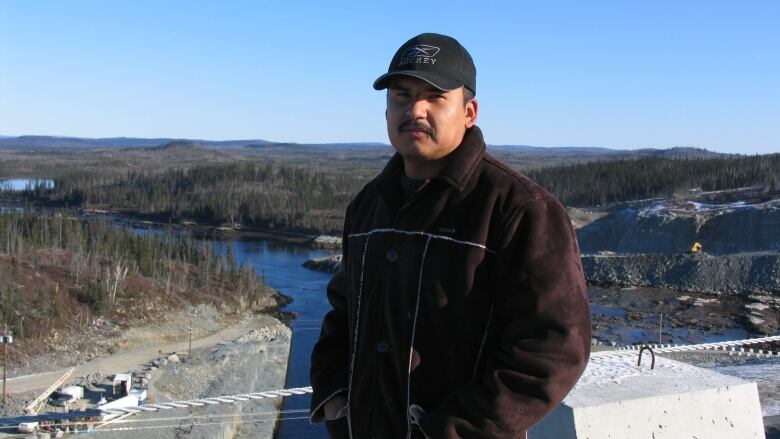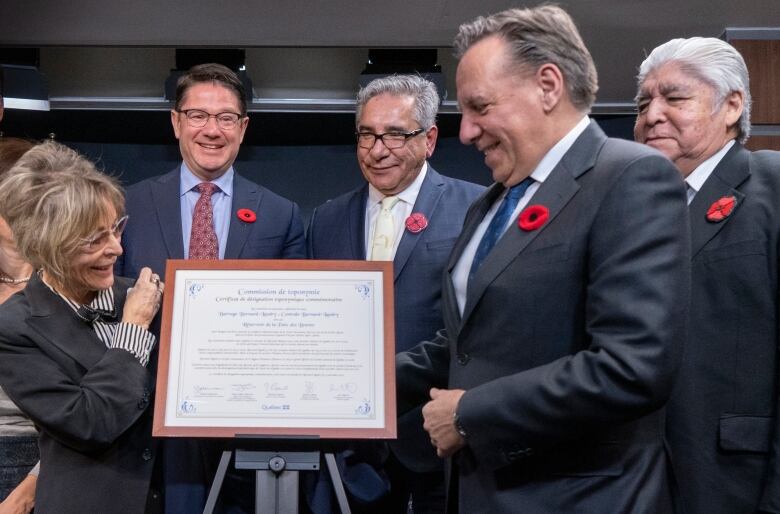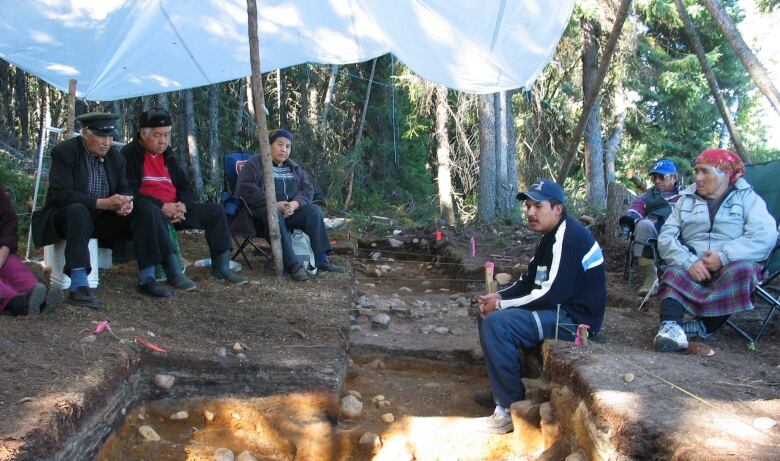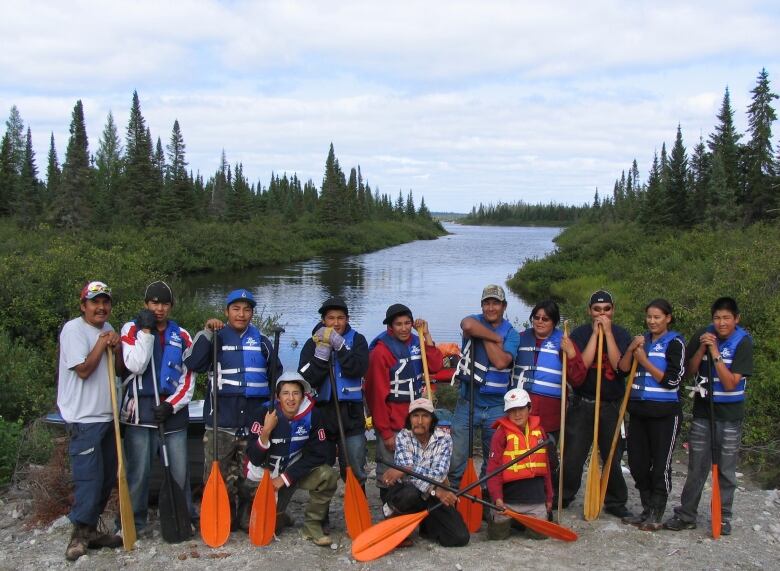'Like losing a loved one': Quebec dam renaming painful for some Cree
Quebec rededicates EM-1 dam in honour of former premier Bernard Landry

Jamie Moses remembers the heartbreak of that day more than anything.
He was a young Cree man,23 years old, on Nov.5, 2005, attending a ceremony as the gates of the Eastmain-1 dam in northern Quebec were closed and the flooding of more than 600 square kilometres of his people's territory began.
"We saw rapids disappear within minutes," said Moses who, along with some of the other Cree present that day, had a very different view of history than the Hydro-Qubec workers and government officials who were also in the crowd.
"You could hear the cheers on the other side celebrating the successful project, but for us it was like losing a loved one."
Many Cree huntersstruggled on these lands and to name it after a premier? It's something I don't really support.- Jamie Moses, Cultural coordinator Eastmain
This week, Hydro-Qubec officials and Quebec premier Franois Legault announced the renaming of that dam and generating station in honour of former Quebec premier Bernard Landry, who negotiated the project and the Paix des Braves economic agreement with the Cree in 2002.
It's a name change supported by some past and present Cree leaders, including current Grand Chief Abel Bosum.

But for Jamie Moses and others, all it did was remind them of that day 14 years ago, as well as remind them of all the Cree have lost as a result of development.
"You could see the sadness of the elders when they announced the gate was 100 per cent closed."
Lillian Moses was also in the crowd that day back in 2005.
"It was hard for me to see where my grandmother and I used to live," Lillian told CBC North at the time, remembering areas where her late grandmother Eliza taught her so much about Cree traditions and language.
"I thought about her. I also thought about my ancestors ... where they used to travel during winter on land, and paddle the lakes and rivers. I could not help but cry," said Lillian.

Premier Legault also announced that the reservoir which flooded the land where Lillian spent so much of her childhood will be renamed Reservoir Paix des Braves, after the $4.5 billion dollar economic agreement signed by Landry and then Cree Grand Chief, Ted Moses.
The Eastmain-1-A-Sarcelle-Rupert project, which included the partial diversion of the Rupert river, divided the Cree, but was endorsed in a 2002 referendum in which a little more than half the population voted.
Moses says he understands some Cree will not celebrate the new names and did not endorse the project.
All I can say is I salute you to those who did not agree.- Ted Moses, former Cree Grand Chief
"All I can say is I salute you to those who did not agree," said the former grand chief, adding he was reminded of something his friend Bernard Landry said at the time.
"He said to the people, 'even if we do not all think in the same way, we need to be equals, but this is not a reason why we should not like each other'," recalled Ted Moses.

Jamie Moses says he doesn't deny there have been positive impacts from thePaix des Braves agreement and the dams, but he doesn't think it should be named in honour of another Quebec premier. The La Grande 2 generating station and dam built in the 1970s is named after former premier Robert Bourassa.
"There were many, many Cree hunters that struggled on these lands and to name it after a premier? It's something I don't really support."
Moses, who has worked as a cultural coordinator for his community of Eastmain for 14 years, also says he doesn't understand why the Cree had to sacrifice even more of their territory to get Quebec to deliver the full benefits of the James Bay and Northern Quebec Agreement.
In the leadup to the closing of the gates, as a young man in his early 20s, Moses spent three years travelling the lands that would be flooded around Eastmain, as well as Nemaska and Mistissini.
He and a team of archeologists and historians recorded interviews with elders and collected artifacts of thousands of years of Cree presence on the territory that is today underwater.

It was part of a project undertaken by the Socit d'nergie de la Baie James (SEBJ) and the Archaeology and Cultural Heritage Program (ACHP) between 2002 and 2005 and was funded out of theNadoshtin Agreement, which was signed at the same time as Paix des Braves.
The stories Moses heard over those 3 years deeply affected him and still guide him today.
Stories like that of the Shanoush family which lost five family members to starvation in the mid 1940s.
"Being able to be at that location was special for me because I had heard the story over and over growing up," said Moses, adding they were his grandmother's cousins.
Moses says all of the families involved in the archeology project chose to leave their loved ones remains on the land despite the coming flood.

In the summer of 2005, a few months before the gates were closed, Jamie Moses organized a canoe trip to take a group of youth on the Eastmain River, one last time.
"I felt it was a great way to honour our ancestors, the land, nature, the animals, and for us to do one last trip before saying goodbye to this beautiful part of the Eastmain river that will never be the same," said Moses.













_(720p).jpg)


 OFFICIAL HD MUSIC VIDEO.jpg)
.jpg)



























































































